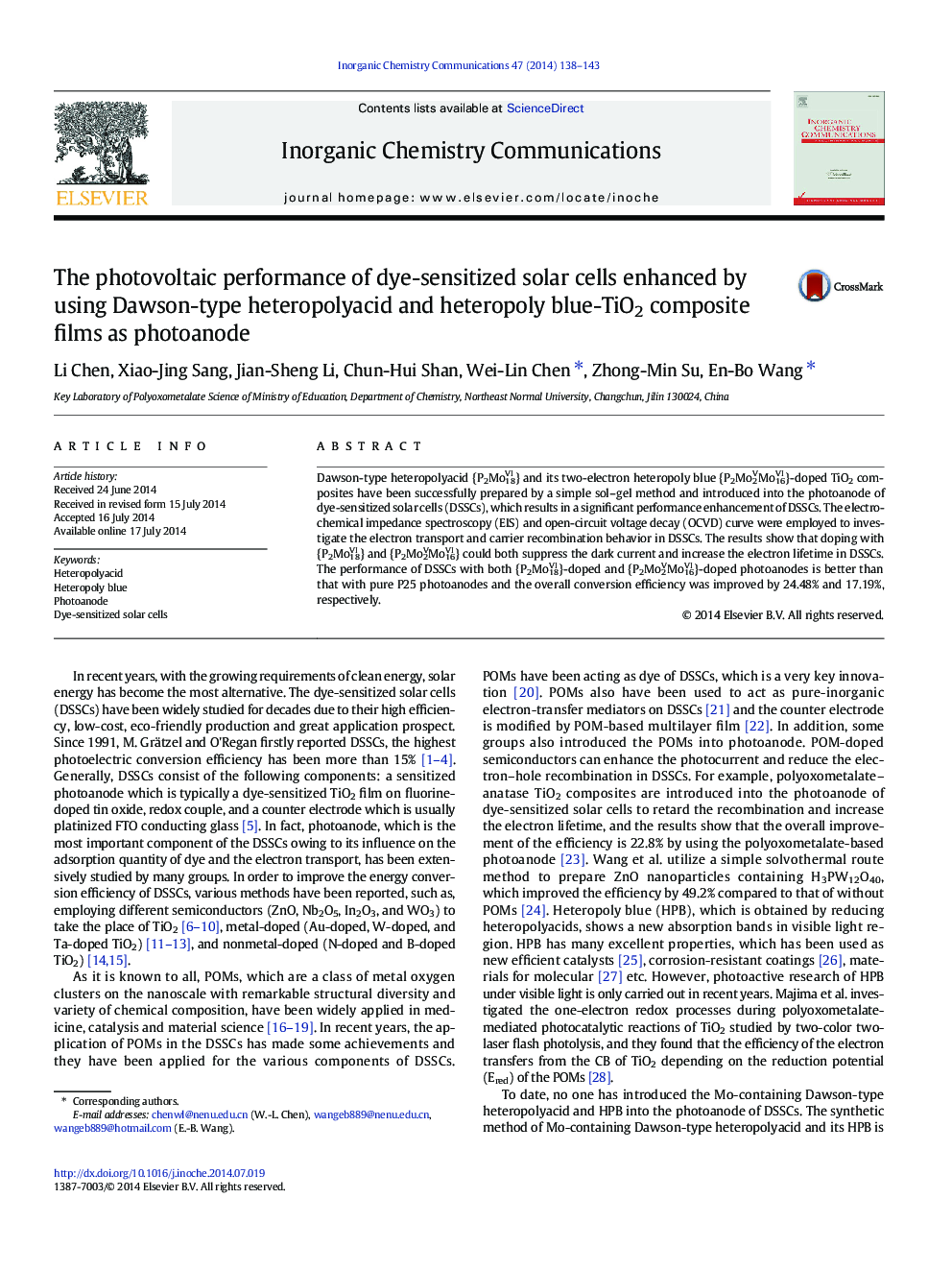| Article ID | Journal | Published Year | Pages | File Type |
|---|---|---|---|---|
| 1301777 | Inorganic Chemistry Communications | 2014 | 6 Pages |
•{P2Mo18VI} and {P2Mo2VMo16VI} were first introduced into photoanode of DSSCs.•Both heteropolyacid and heteropoly blue can improve the performance of DSSCs.•{P2Mo18VI} and {P2Mo2VMo16VI} could both suppress the dark current in DSSCs.•{P2Mo18VI} and {P2Mo2VMo16VI} could both increase the electron lifetime in DSSCs.•Heteropoly blue can be a potential electron attractor for photovoltaic application.
Dawson-type heteropolyacid {P2Mo18VI} and its two-electron heteropoly blue {P2Mo2VMo16VI}-doped TiO2 composites have been successfully prepared by a simple sol–gel method and introduced into the photoanode of dye-sensitized solar cells (DSSCs), which results in a significant performance enhancement of DSSCs. The electrochemical impedance spectroscopy (EIS) and open-circuit voltage decay (OCVD) curve were employed to investigate the electron transport and carrier recombination behavior in DSSCs. The results show that doping with {P2Mo18VI} and {P2Mo2VMo16VI} could both suppress the dark current and increase the electron lifetime in DSSCs. The performance of DSSCs with both {P2Mo18VI}-doped and {P2Mo2VMo16VI}-doped photoanodes is better than that with pure P25 photoanodes and the overall conversion efficiency was improved by 24.48% and 17.19%, respectively.
Graphical abstractDawson-type heteropolyacid {P2Mo18VI} and its two-electron heteropoly blue {P2Mo2VMo16VI}-doped TiO2 composites have been introduced into the photoanode of DSSCs for the first time, which could both suppress the dark current and increase the electron lifetime in DSSCs.Figure optionsDownload full-size imageDownload as PowerPoint slide
